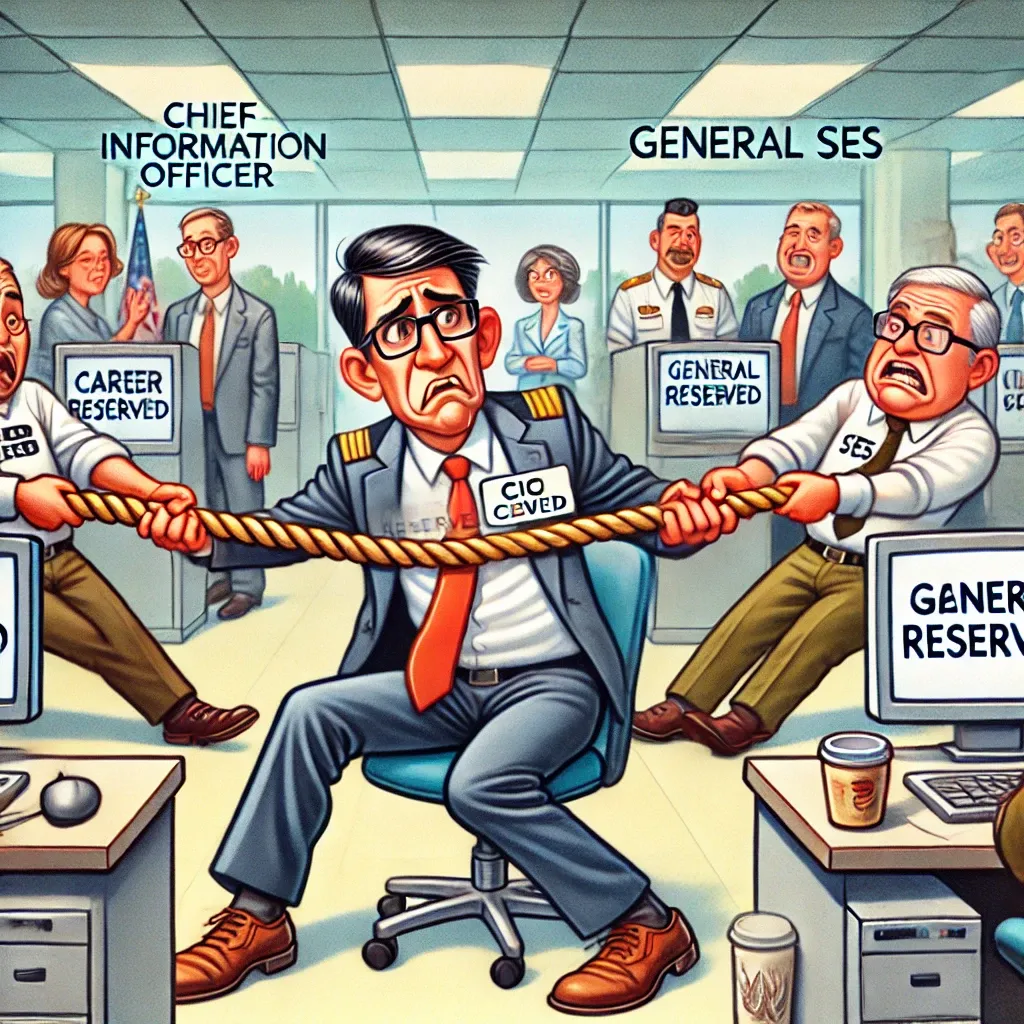The Office of Personnel Management (OPM) just dropped a recommendation that's causing quite a stir in federal IT circles - converting all federal Chief Information Office (CIO) positions from career reserved to general SES roles. In other words, converting the CIO role from a career position into that of a political appointee. On paper, it sounds perfect: bring in fresh talent, align with administration priorities, modernize faster. But here's the thing - I've worked with enough agencies to know that forcing everyone into the same box ignores the wildly different realities these CIOs face.
Take the Department of Defense (DoD). Their CIO isn't just managing email servers - they're orchestrating a massive web of classified networks across multiple military branches. When you're dealing with SIPR/JWICS integration and operational security, you need someone who has been in the trenches. A hot-shot Silicon Valley exec might have great ideas about cloud migration, but without deep institutional knowledge, they could destabilize critical defense systems.
The intelligence community faces similar challenges. At places like NSA and CIA, the CIO is handling offensive cyber capabilities and sensitive intelligence networks. You can't just swap out these leaders every few years and expect operations to run smoothly. The risks of frequent turnover are just too high.
But flip the script and look at agencies like the VA or IRS. These are essentially massive customer service operations that happen to be run by the government. When the VA brought in CIOs with commercial healthcare IT experience, we saw real progress in modernizing veteran health records. The IRS could benefit from similar outside perspective - tax systems are complex, sure, but ultimately, they're a technology problem that private sector leaders have solved before.
The regulatory world sits somewhere in the middle. The SEC's CIO shapes how the entire financial sector handles digital records and automated trading. Treasury manages the government's financial backbone. These roles need both technical depth and innovation - maybe a hybrid approach where we bring in external talent but give them longer terms to build institutional knowledge.
Then you've got the technical agencies. NIST sets standards for the nation. DOE labs run supercomputers. These CIOs need to be career technologists - not because we're stuck in our ways, but because technical credibility matters more than management style.
Policy-focused agencies like HUD and GSA tell a different story. They need CIOs who can translate between tech capabilities and program needs. General SES positions make sense here - bring in leaders who understand both government requirements and commercial solutions.
Here's something we need to get straight: While agencies themselves will (and should) always reflect changing political priorities - that's democracy working as intended - their IT systems and infrastructure should not be political footballs. A DoD network needs to work just as effectively whether we're expanding or reducing military engagement. IRS systems need to reliably process taxes whether rates are going up or down. VA health records need to serve veterans regardless of what benefits Congress authorizes.
Think of agency IT as the road system - we can debate where to build highways and how to fund them, but once built, they need to work reliably for everyone. CIOs should be focused on making their systems robust, secure tools that can adapt to and implement whatever policies democratic leadership decides, not on pushing political agendas through technology choices.
Here's what frustrates me about OPM's blanket recommendation: it's trying to solve a real problem with an oversimplified solution. Yes, some agencies desperately need to inject private sector experience into their IT leadership. But others would see their core missions compromised by constant CIO turnover. The measure of success should not be how many positions we convert - it should be how well each agency's CIO model supports their actual mission. Security agencies need stability and threat prevention. Public service agencies need customer satisfaction. Research agencies need technical reliability. Policy agencies need program support and industry alignment.
Instead of forcing standardization, we need a practical framework:
- If your systems directly support national security -> Keep it career reserved
- If you primarily serve the public -> Consider general SES
- If you're setting technical standards -> Stick with career technologists
- If you're focused on policy -> Bring in fresh perspectives
I'm not saying OPM is completely wrong. Many agencies could benefit from shifting to general SES CIOs, but pretending this model works everywhere is just reorganization theater. Real progress comes from matching leadership models to mission requirements.
What's your take? Have you seen agencies thrive after bringing in external CIO talent? Or cases where stability proved more valuable than innovation? Let's talk about what actually works, not what looks good on an org chart.
#FedIT #GovCon #FederalCIO #PublicSector #DigitalTransformation




